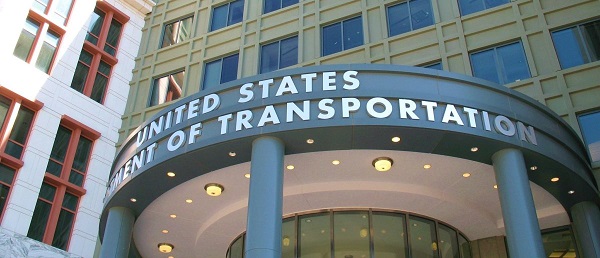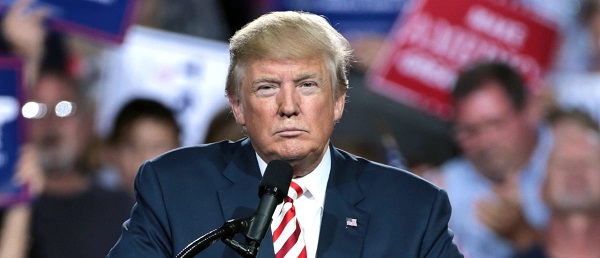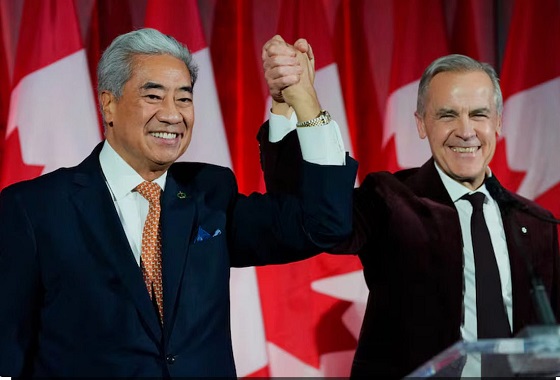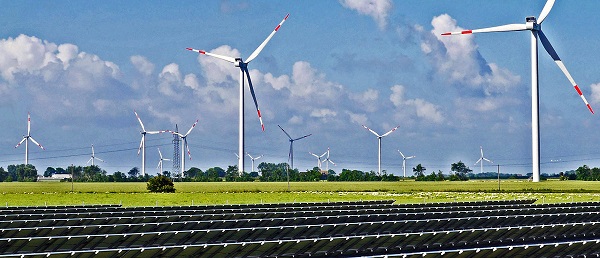Uncategorized
Supreme Court nominee Kavanaugh clears crucial Senate hurdle

WASHINGTON — A deeply divided Senate pushed Brett Kavanaugh’s Supreme Court nomination past a key procedural hurdle Friday, setting up a likely final showdown on Saturday in a spellbinding battle that’s seen claims of long-ago sexual assault by the nominee threaten President Donald Trump’s effort to tip the court rightward for decades.
The Senate voted 51-49 to limit debate, defeating Democratic efforts to scuttle the nomination with endless delays and moving the chamber toward a climax of a fight that has captivated the country since summer. With Republicans controlling the chamber 51-49, one Republican voted to stop the nomination, one Democrat to send it further.
Of the four lawmakers who had not revealed their decisions until Friday — all moderates — Republican Sens. Susan Collins of Maine and Jeff Flake of Arizona voted yes, as did Democrat Joe Manchin of West Virginia. Republican Lisa Murkowski of Alaska voted not to move the nomination ahead.
While the vote was a victory for the GOP, lawmakers can vote differently on the climactic confirmation roll call, which seems likely Saturday afternoon. Collins told reporters she would announce later Friday how she would go.
That left unclear whether Friday’s tally
Confirmation would be a crowning achievement for Trump, his conservative base and Senate Majority Leader Mitch McConnell, R-Ky.
Murkowski sat solemnly during the roll call and whispered “No” when it was her turn to vote. As the tally neared an end, she spoke with Collins, a friend. The pair was surrounded by colleagues from both parties after the vote.
All four lawmakers who’d been undeclared said little or nothing to reporters as they left the chamber.
Trump weighed in shortly after the roll call was announced, tweeting, “Very proud of the U.S. Senate for voting ‘YES’ to advance the nomination of Judge Brett Kavanaugh!”
Friday’s procedural vote occurred a day after the Senate received a roughly 50-page FBI report on the sexual assault allegations, which Trump ordered only after wavering GOP senators forced him to do so.
Republicans said the secret document — which described interviews agents conducted with 10 witnesses — failed to find anyone who could corroborate allegations by his two chief accusers, Christine Blasey Ford and Deborah Ramirez. Democrats belittled the bureau’s findings, saying agents constrained by the White House hadn’t reached out to numerous other people with potentially important information.
The vote occurred against a backdrop of
On the Senate floor, lawmakers’ comments underscored the lingering bitterness.
“What left wing groups and their Democratic allies have done to Judge Kavanaugh is nothing short of monstrous,” Senate Judiciary Committee Chairman Chuck Grassley, R-Iowa, said on the chamber’s floor before the vote. He accused Democrats of using destructive, unwarranted personal attacks on the nominee and even encouraging the protesters, saying, “They have encouraged mob rule.”
Dianne Feinstein of California, that committee’s top Democrat, said Kavanaugh’s testimony at last week’s dramatic Judiciary panel hearing should “worry us all,” citing “a hostility and belligerence that is unbecoming” of a Supreme Court nominee.
Senate Minority Leader Chuck Schumer, D-N.Y., called the fight “a sorry epilogue to the brazen theft of Justice Scalia’s seat.” That reflected Democrats’ lasting umbrage over Republicans’ 2016 refusal to even consider Merrick Garland, President Barack Obama’s nominee to replace the late Antonin Scalia.
When Trump nominated Kavanaugh in July, Democrats leapt to oppose him, saying that past statements and opinions showed he’d be a threat to the Roe v. Wade case that assured the right to abortion. They said he also seemed ready to knock down President Barack Obama’s health care law and to rule for Trump if federal authorities probing his 2016 campaign’s connections to Russia initiate legal action.
But that evolved into a late-summer spectacle after Ford accused Kavanaugh of trying to rape her at an alcohol-infused high school gathering in 1982, when both were teenagers. Two other women also emerged and accused him of other incidents of sexual misconduct. Kavanaugh has denied all the charges.
Under pressure from wavering Republicans, GOP leaders agreed to an extraordinary Senate Judiciary Committee hearing last week that mesmerized the nation as Ford nervously recounted her story and said she was “100
A fuming Kavanaugh strode into the same packed hearing room that afternoon and said he, too, was “100
___
AP reporters Mary Clare Jalonick, Matthew Daly, Padmananda Rama, Kenneth Thomas and Catherine Lucey contributed.
Lisa Mascaro And Alan Fram, The Associated Press
Uncategorized
Cost of bureaucracy balloons 80 per cent in 10 years: Public Accounts

The cost of the bureaucracy increased by $6 billion last year, according to newly released numbers in Public Accounts disclosures. The Canadian Taxpayers Federation is calling on Prime Minister Mark Carney to immediately shrink the bureaucracy.
“The Public Accounts show the cost of the federal bureaucracy is out of control,” said Franco Terrazzano, CTF Federal Director. “Tinkering around the edges won’t cut it, Carney needs to take urgent action to shrink the bloated federal bureaucracy.”
The federal bureaucracy cost taxpayers $71.4 billion in 2024-25, according to the Public Accounts. The cost of the federal bureaucracy increased by $6 billion, or more than nine per cent, over the last year.
The federal bureaucracy cost taxpayers $39.6 billion in 2015-16, according to the Public Accounts. That means the cost of the federal bureaucracy increased 80 per cent over the last 10 years. The government added 99,000 extra bureaucrats between 2015-16 and 2024-25.
Half of Canadians say federal services have gotten worse since 2016, despite the massive increase in the federal bureaucracy, according to a Leger poll.
Not only has the size of the bureaucracy increased, the cost of consultants, contractors and outsourcing has increased as well. The government spent $23.1 billion on “professional and special services” last year, according to the Public Accounts. That’s an 11 per cent increase over the previous year. The government’s spending on professional and special services more than doubled since 2015-16.
“Taxpayers should not be paying way more for in-house government bureaucrats and way more for outside help,” Terrazzano said. “Mere promises to find minor savings in the federal bureaucracy won’t fix Canada’s finances.
“Taxpayers need Carney to take urgent action and significantly cut the number of bureaucrats now.”
Table: Cost of bureaucracy and professional and special services, Public Accounts
| Year | Bureaucracy | Professional and special services |
|
$71,369,677,000 |
$23,145,218,000 |
|
|
$65,326,643,000 |
$20,771,477,000 |
|
|
$56,467,851,000 |
$18,591,373,000 |
|
|
$60,676,243,000 |
$17,511,078,000 |
|
|
$52,984,272,000 |
$14,720,455,000 |
|
|
$46,349,166,000 |
$13,334,341,000 |
|
|
$46,131,628,000 |
$12,940,395,000 |
|
|
$45,262,821,000 |
$12,950,619,000 |
|
|
$38,909,594,000 |
$11,910,257,000 |
|
|
$39,616,656,000 |
$11,082,974,000 |
Uncategorized
Trump Admin Establishing Council To Make Buildings Beautiful Again


From the Daily Caller News Foundation
By Jason Hopkins
The Trump administration is creating a first-of-its-kind task force aimed at ushering in a new “Golden Age” of beautiful infrastructure across the U.S.
The Department of Transportation (DOT) will announce the establishment of the Beautifying Transportation Infrastructure Council (BTIC) on Thursday, the Daily Caller News Foundation exclusively learned. The BTIC seeks to advise Transportation Secretary Sean Duffy on design and policy ideas for key infrastructure projects, including highways, bridges and transit hubs.
“What happened to our country’s proud tradition of building great, big, beautiful things?” Duffy said in a statement shared with the DCNF. “It’s time the design for America’s latest infrastructure projects reflects our nation’s strength, pride, and promise.”
“We’re engaging the best and brightest minds in architectural design and engineering to make beautiful structures that move you and bring about a new Golden Age of Transportation,” Duffy continued.
Mini scoop – here is the DOT’s rollout of its Beautifying Transportation Infrastructure Council, which will be tasked with making our buildings beautiful again. pic.twitter.com/
9iV2xSxdJM — Jason Hopkins (@jasonhopkinsdc) October 23, 2025
The DOT is encouraging nominations of the country’s best architects, urban planners, artists and others to serve on the council, according to the department. While ensuring that efficiency and safety remain a top priority, the BTIC will provide guidance on projects that “enhance” public areas and develop aesthetic performance metrics.
The new council aligns with an executive order signed by President Donald Trump in August 2025 regarding infrastructure. The “Making Federal Architecture Beautiful Again” order calls for federal public buildings in the country to “respect regional architectural heritage” and aims to prevent federal construction projects from using modernist and brutalist architecture styles, instead returning to a classical style.
“The Founders, in line with great societies before them, attached great importance to Federal civic architecture,” Trump’s order stated. “They wanted America’s public buildings to inspire the American people and encourage civic virtue.”
“President George Washington and Secretary of State Thomas Jefferson consciously modeled the most important buildings in Washington, D.C., on the classical architecture of ancient Athens and Rome,” the order continued. “Because of their proven ability to meet these requirements, classical and traditional architecture are preferred modes of architectural design.”
The DOT invested millions in major infrastructure projects since Trump’s return to the White House. Duffy announced in August a $43 million transformation initiative of the New York Penn Station in New York City and in September unveiledmajor progress in the rehabilitation and modernization of Washington Union Station in Washington, D.C.
The BTIC will comprise up to 11 members who will serve two-year terms, with the chance to be reappointed, according to the DOT. The task force will meet biannually. The deadline for nominations will end Nov. 21.
-

 Censorship Industrial Complex2 days ago
Censorship Industrial Complex2 days agoHow Wikipedia Got Captured: Leftist Editors & Foreign Influence On Internet’s Biggest Source of Info
-

 Business23 hours ago
Business23 hours agoCanada Hits the Brakes on Population
-

 Crime12 hours ago
Crime12 hours agoBrown University shooter dead of apparent self-inflicted gunshot wound
-

 International1 day ago
International1 day agoHouse Rejects Bipartisan Attempt To Block Trump From Using Military Force Against Venezuela
-

 Frontier Centre for Public Policy1 day ago
Frontier Centre for Public Policy1 day agoCanada Lets Child-Porn Offenders Off Easy While Targeting Bible Believers
-

 International2 days ago
International2 days agoBondi Beach Shows Why Self-Defense Is a Vital Right
-

 Crime2 days ago
Crime2 days agoThe Uncomfortable Demographics of Islamist Bloodshed—and Why “Islamophobia” Deflection Increases the Threat
-

 Agriculture23 hours ago
Agriculture23 hours agoWhy is Canada paying for dairy ‘losses’ during a boom?










